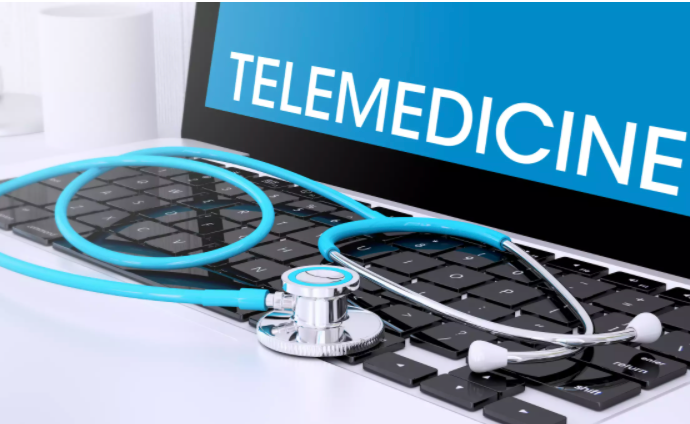[ad_1]

by Dr. Shravan Subramanyam
The pandemic turned over a new leaf in the history of healthcare for a country like India. Digital health took a whole new meaning and we saw patients take the digital healthcare turn. India’s per capita consumption of data is 12 gigabytes per person per month. There are 1.18 billion phone connections, 700 million internet connections and 600 million smartphone connections in India. While there is no doubt on how Covid-19 accelerated the pace for digital health, for the medium to become non-negotiable, which it already has in recent times, we will need more than policies. We need steps that strengthen the policies in progress.
The government’s initiatives clearly redefine the role of digital with the National Digital Health Mission, (now called Ayushman Bharat Digital Mission, ABDM), building a coherent digital pathway for the future. But the next leg of this journey will be defined by the steps we take today.
Delving Deeper into Tech-infra solutions
Today, we have access to tech that allows sharing our records digitally. With the Ayushman Bharat Health Account (ABHA) Number, a patient can now interact with participating healthcare providers and receive their digital lab reports, prescriptions, and diagnosis— these are accessed by verified healthcare professionals. While we build on the Digital India dream, the roadmap will be defined by technical and financial incentivization to small and larger providers— on the pillars of accessibility, affordability and reliability.
The guiding principles of the National Digital Health Ecosystem are based on open APIs and interoperability, federated architecture, framework, compliance assessment, voluntary participation, user inclusivity, seamless portability, and more. ABDM is an ambitious project in the healthcare sector that seeks to break silos.
Unification of Healthcare Records
India is looking at some very successful digital initiatives like the emphasis of ABDM on interoperability, and a single source of truth— this will further make healthcare services accessible. A unified health interface (UHI) will further give this sector much-needed impetus by ensuring interoperability and ease of access to the service providers. With a focus on developing the Health Data Exchange layer (ABDM architecture), we are looking at developing a common public digital good in terms of digital registries. These are changes that will change the story of healthcare in a country where we have witnessed that lack of standardization among data storage systems has made it impossible to collate data from multiple sources— resulting in duplication, redundancy, and delays.
Skilling for Transformation
Even as technology is the central thread of India’s Digital Mission, we cannot ignore the role skilling plays in this journey. For instance, even with nearly 110 million patients Chronic Kidney Disease (CKD) patients, nearly half need timely interventions from nephrologists (kidney specialist doctors), to reduce the progression of their disease. If this disease is not controlled early, there is a high likelihood of progressions into end-stage CKD.
At this point, the patient would need dialysis, a highly expensive and painful lifetime kidney replacement therapy. Now, not only do we need hospitals and doctors to adopt and use ABDM-linked solutions, we also need more specialists. The shortage—India has around 2,600 nephrologists in total, with a majority of them concentrated in top cities. How do we bridge this gap?
Mainstreaming of AYUSH is an excellent step forward by the government. According to the rural health statistics report for 2020 released by Union Health Ministry, 8,709 AYUSH doctors were posted at 25,140 rural primary health centres and 541 at 5,481 community health centres. Now, with just over 13 lakh allopathic doctors and nearly 8 lakh AYUSH practitioners, we are looking at bridge courses and continuing medical education for preventive care & promotional health, primary care, and public health. AYUSH doctors can fill in the gap in the availability of healthcare in the interiors. Primary, secondary, and tertiary care linkages can be further enhanced through Digital tools, telemedicine, and remote monitoring.
Having said this, we need to be cognizant that there has been inadequate research and development on the ingredients of medications prescribed by some strands of AYUSH.
At the cusp of a significant shift in healthcare, we must look at solutions that are led by collaboration between the industry, academia and the government. The objective is to create a new regime resting on the pillars of a digital transformation. From stakeholders and hospitals finding solutions to partner and find common ground to tech that helps us do away with duplication and redundancy as much as possible, the new era of digital health demands a lot more than policies and we must deliver.
Dr. Shravan Subramanyam, President, NATHEALTH and Managing Director, Wipro GE Healthcare
(DISCLAIMER: The views expressed are solely of the author and ETHealthworld does not necessarily subscribe to it. ETHealthworld.com shall not be responsible for any damage caused to any person / organisation directly or indirectly.)
[ad_2]
Source link








